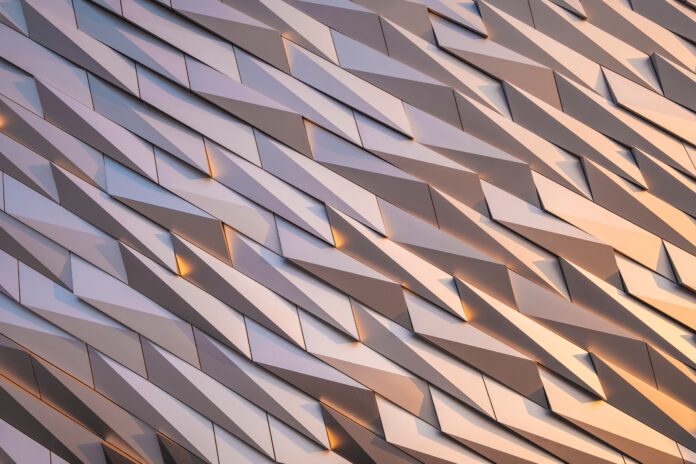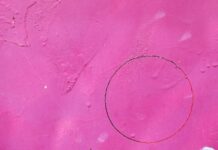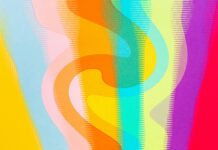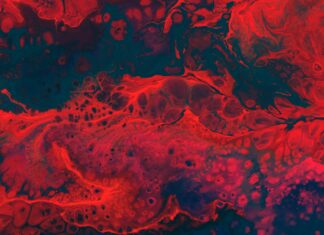Quantum Neural Architecture Search: Exploring the Synergy of Quantum Computing and Deep Learning
In recent years, the fields of quantum computing and deep learning have independently witnessed remarkable advancements, revolutionizing the way we process information and tackle complex problems. Quantum computing harnesses the principles of quantum mechanics to perform certain calculations exponentially faster than classical computers, promising breakthroughs in fields such as cryptography, optimization, and simulation. Meanwhile, deep learning has achieved unprecedented success in tasks like image recognition, natural language processing, and game playing. Quantum Neural Architecture Search (Q-NAS) emerges at the intersection of these two domains, seeking to leverage quantum computing’s computational power to enhance the process of discovering optimal neural network architectures for specific tasks. This fusion holds the potential to propel artificial intelligence (AI) research to new heights by efficiently exploring the vast landscape of neural architectures, ultimately leading to models with improved per
formance and generalization.
The concept of neural architecture search (NAS) involves automating the design of neural network architectures to fit particular tasks, alleviating the burden of manual engineering and accelerating the development of deep learning models. Traditional NAS techniques often rely on classical computing resources and methods like reinforcement learning, evolutionary algorithms, and gradient-based optimization. While effective, these approaches can be computationally expensive and time-consuming due to the sheer number of potential architectures that must be evaluated. Quantum Neural Architecture Search introduces a new paradigm by incorporating quantum computing techniques into the architecture search process. This is predicated on the idea that quantum computing’s inherent ability to process information in parallel and its potential to perform complex optimizations can significantly expedite the search for optimal neural architectures.
At its core, Quantum Neural Architecture Search employs quantum computing components, such as quantum bits or qubits, and quantum gates, to represent and manipulate neural network architectures and their corresponding hyperparameters. The qubits can exist in multiple states simultaneously through superposition, and quantum gates can entangle these qubits, enabling intricate operations to be executed in a fraction of the time it would take a classical computer. This parallelism offers a substantial advantage when exploring the vast search space of potential architectures. Moreover, quantum computers excel in solving optimization problems, a crucial aspect of architecture search, by utilizing quantum annealing or variational quantum algorithms. These quantum optimization techniques can efficiently navigate through the space of architectures to identify those that exhibit promising performance characteristics.
Quantum Neural Architecture Search begins by encoding a set of candidate neural architectures into quantum states, which are represented by qubits. These qubits are then manipulated using quantum gates to explore the design space of possible architectures. Quantum annealing can be employed to find optimal or near-optimal solutions by cooling the qubits’ quantum states into a low-energy configuration that corresponds to a high-quality architecture. Variational quantum algorithms, on the other hand, leverage parameterized quantum circuits to iteratively refine the quantum states, converging towards optimal solutions through classical optimization loops. These quantum-assisted optimization strategies significantly reduce the computational effort required to explore the architecture space.
The integration of quantum computing into neural architecture search also raises intriguing questions about hybrid classical-quantum optimization methods. Hybrid approaches leverage both classical and quantum computing resources to strike a balance between the strengths of each paradigm. Quantum Neural Architecture Search can adopt a hybrid methodology by offloading specific tasks to a quantum computer, such as evaluating architecture performance or conducting architectural transformations. This collaboration capitalizes on the advantages of quantum computing while mitigating the limitations posed by current quantum hardware’s error rates and qubit connectivity.
In conclusion, Quantum Neural Architecture Search stands at the crossroads of quantum computing and deep learning, offering a novel approach to expedite the discovery of optimal neural network architectures. By harnessing the parallelism and optimization capabilities of quantum computers, Q-NAS holds the promise of revolutionizing the field of artificial intelligence. This synergy between quantum computing and deep learning has the potential to reshape the landscape of AI research, enabling the development of more efficient and powerful neural network models. As both quantum computing and deep learning continue to advance, Quantum Neural Architecture Search represents an exciting frontier that could shape the future of AI and propel us towards solving increasingly complex and impactful problems.
The marriage of quantum computing and deep learning has ushered in a new era of possibilities, offering a tantalizing glimpse into the boundless potential of synergistic innovation. Quantum Neural Architecture Search (Q-NAS) emerges as a beacon at this crossroads, where quantum mechanics and artificial intelligence entwine to forge a path of accelerated discovery and enhanced problem-solving. This convergence opens doors to uncharted territories, inspiring researchers to explore the harmony between the quantum and classical realms.
In the vast landscape of artificial intelligence research, neural architecture search (NAS) has emerged as a pivotal concept. The traditional manual crafting of neural network architectures has given way to automated methods that leverage computational power to sculpt models tailored for specific tasks. Q-NAS takes this notion and elevates it, infusing the process with the peculiar magic of quantum computing. This promises an exodus from the limitations of classical computing, enabling us to traverse the intricate tapestry of neural architectures with unprecedented speed and finesse.
Consider the quantum bit, or qubit, as the harbinger of this quantum dawn. Unlike classical bits confined to binary states, qubits revel in superposition, embodying a quantum dance that encapsulates multiple states simultaneously. This inherent multiplicity casts a quantum computer into a realm of parallelism, magnifying its computational prowess. A symphony of these qubits, orchestrated by quantum gates, waltzes through complex operations with uncanny agility. This intricate choreography mimics the neural network’s web of connections and parameters, mirroring the dance of neurons firing and weaving thoughts within our minds.
The central tenet of Quantum Neural Architecture Search is the encoding of neural architectures into quantum states. Imagine the qubits as canvases, each brushstroke of their quantum states capturing an architectural configuration. These configurations, akin to architectural blueprints, unfurl before the quantum gates, which, like master architects, transform and mold the structures with a grace bordering on the ethereal. It is as though the neural architectures are whispered to life through the cryptic language of quantum mechanics.
In the heart of this symbiosis lies quantum annealing, a technique harnessing the physics of quantum fluctuations to sift through myriad possibilities and distill them into optimal solutions. As the qubits surrender to the cooling embrace of quantum annealing, they navigate the multidimensional terrain of architectural potential. Each dip in energy corresponds to a nugget of architectural gold—a configuration poised to transcend the ordinary and embody the extraordinary. It’s a celestial game of optimization played on a quantum chessboard, where each move inches us closer to neural architectures that resonate with the symphony of our AI aspirations.
A contrasting note is struck by variational quantum algorithms, reminiscent of a conductor coaxing an orchestra into harmony. These algorithms craft parametric quantum circuits, conducting iterative dances of refinement. Each iteration refines the quantum state’s parameters, guiding it towards a state of grace that reflects optimal architecture. These algorithms, akin to artists perfecting their craft, unleash the potential of quantum computing in iterative waves, chiseling away at the marble block of possibilities to unveil the hidden Michelangelo within.
But this quantum waltz is not without its subtleties. The nascent quantum hardware, encumbered by errors and imperfections, must be tenderly woven into the fabric of Quantum Neural Architecture Search. Hybrid approaches emerge, weaving the classical and quantum realms into a tapestry of resilience. Classical computers provide a sturdy scaffold, mitigating quantum hardware’s frailties. Like a choreographed duet, classical and quantum resources collaborate to birth innovative solutions while acknowledging the boundaries of the present quantum landscape.
As we peer through the telescope of possibility, Quantum Neural Architecture Search beckons us to reimagine AI’s trajectory. Beyond the immediate gains of faster architecture search, it illuminates a broader vista of quantum-assisted artificial intelligence. Quantum computing’s marriage with deep learning doesn’t end at architecture search—it resonates with quantum data encoding, quantum-enhanced training, and the uncharted waters of quantum-inspired neural models. The potential to birth entirely new paradigms of AI thought and application is tantalizingly tangible.
In the grand tapestry of technological evolution, Quantum Neural Architecture Search stitches together threads of quantum mechanics and deep learning. It fuses the ethereal quantum realm with the pragmatic landscapes of artificial intelligence, weaving a narrative of discovery and advancement. It invites us to embrace the paradoxes of the quantum world, where particles can be in two states at once, where computations defy classical logic, and where the ordinary transforms into the extraordinary. As we navigate this uncharted territory, we may uncover not just superior neural architectures, but a deeper understanding of the enigmatic relationship between quantum and classical, mind and machine, and the uncharted territories of innovation lying ahead.
In the realm of technological evolution, the convergence of disparate fields often births innovations that defy convention and redefine our understanding of what’s possible. Quantum Neural Architecture Search (Q-NAS) stands as a striking embodiment of this phenomenon, an intersection where quantum computing and deep learning intertwine to reimagine the frontiers of artificial intelligence. This harmonious marriage of quantum mechanics and neural architecture search is not merely a fusion of tools; it’s an exploration into the very fabric of reality, where quantum qubits dance in entanglement, and neural networks unfold in intricate layers.
Consider, for a moment, the world of quantum computing—a landscape of probabilities, uncertainty, and parallelism. Traditional computers, harnessed by the constraints of classical bits, maneuver through logical states as defined by ones and zeroes. Quantum computing transcends this binary simplicity with its qubits, which possess the extraordinary ability to inhabit multiple states simultaneously through superposition. Imagine this as a symphony of thought, where a quantum bit isn’t confined to a solitary note but harmonizes in a chorus of melodies, resonating across possibilities.
In Quantum Neural Architecture Search, the very building blocks of artificial intelligence are cast in this quantum mold. Neural networks, complex webs of interconnected nodes inspired by the human brain, find their counterparts in the interconnected qubits of a quantum computer. The quantum gates, akin to the synapses firing in our neural networks, orchestrate a mesmerizing ballet that navigates the labyrinthine spaces of potential architectures. It’s as though we’ve unearthed an enchanted looking glass, revealing a parallel realm where computation is an ethereal dance, and architecture is a tapestry woven by the delicate hands of quantum probabilities.
Quantum annealing emerges as a profound protagonist in this narrative, harnessing the energy landscapes of quantum physics to seek optimal solutions. It’s a dance with nature itself, where qubits relinquish their classical confines and embrace the quantum whirl, seeking equilibrium at states of lowest energy. This metamorphosis echoes the essence of neural architecture search—the quest for configurations that minimize error and maximize performance. Imagine the qubits as cosmic travelers, navigating through an ever-shifting landscape of valleys and peaks, seeking the hidden valleys where optimal architectural configurations lay nestled.
Yet, like any symphony, this dance is not bereft of complexity. Quantum hardware, still in its infancy, presents a symphony of its own—fidelity errors, decoherence, and limited connectivity. Here, hybridity enters the stage, where the classical realm extends its supportive arm to the quantum realm. Classical computers, with their robust stability, serve as tutors guiding the quantum ensemble, tempering their impulsive quantum tendencies. This juxtaposition of classical and quantum, akin to a mentor guiding a prodigious apprentice, forms the cornerstone of a balanced and resilient Q-NAS approach.
Zooming out from the quantum canvas, the implications of Quantum Neural Architecture Search ripple across the landscape of AI research. Beyond the immediate goal of expediting architecture discovery, the synergy of quantum and neural pathways unfurls new dimensions of exploration. Quantum-enhanced training beckons—a realm where quantum computing accelerates the optimization and generalization of neural networks. Quantum data encoding whispers promises of efficient data representation and transformation, bridging the gap between raw data and enlightened models. Quantum-inspired neural architectures, a nascent avenue, hint at novel ways of encoding, processing, and inferring information, unraveled through the lens of quantum principles.
As we navigate this captivating synthesis, Quantum Neural Architecture Search beckons us to broaden our horizons. The possibilities extend beyond AI, seeping into diverse domains—drug discovery, climate modeling, financial optimization—where the quantum edge promises to slice through complex problems. Just as classical computing revolutionized industries, the quantum leap carries the torch of innovation into the heart of uncharted territories.
In the symphony of human progress, Quantum Neural Architecture Search emerges as a crescendo—a harmony of quantum coherence and neural intelligence, orchestrated to compose solutions that transcend the sum of their parts. It invites us to embrace the beauty of quantum mechanics, where particles blur between existence and nonexistence, and to revel in the elegance of neural networks, where knowledge emerges from interconnected simplicity. This journey isn’t just about unraveling the mysteries of the cosmos or crafting superior AI; it’s about embracing the interplay of complexity and simplicity, and venturing into a reality where the extraordinary becomes the norm.


















